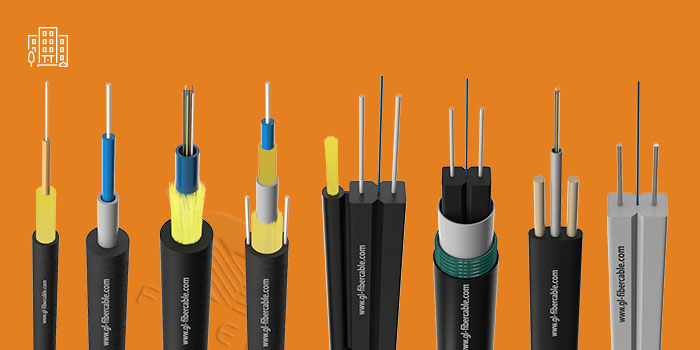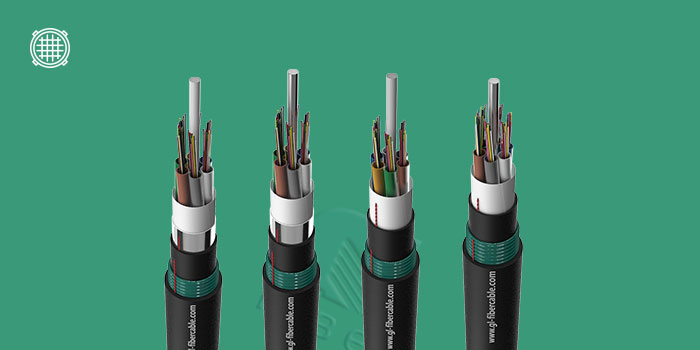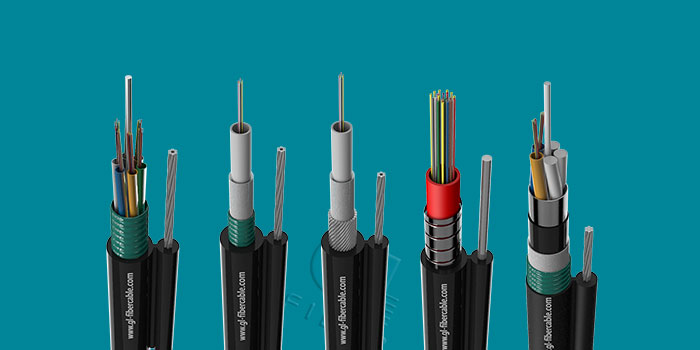Optical cables come in various types, each designed for specific applications and environments. Here are some common types of optical cables and their uses:
Single-Mode Fiber (SMF)
Uses:
Long-distance telecommunications and data transmission, such as in backbone networks and undersea cables.
High-speed internet connections for service providers and large enterprises.
Fiber-to-the-Home (FTTH) installations for residential and business broadband.
Cable TV transmission.
Multi-Mode Fiber (MMF)
Uses:
Short-distance data communications, such as within buildings or data centers.
Local Area Networks (LANs) for connecting computers, servers, and other network devices.
Audio/visual applications, including HDMI over fiber solutions.
Industrial networks for automation and control systems.

Loose-Tube Cables
Uses:
Outdoor installations where the cable may be exposed to harsh environmental conditions.
Aerial, direct-buried, or conduit installations for telecommunications and broadband networks.
Campus environments connecting multiple buildings or facilities.
Tight-Buffered Cables
Uses:
Indoor installations where the cable needs to be routed through walls, ceilings, and conduits.
Patch cords and equipment connections in data centers and telecommunication rooms.
Industrial environments where the cable may be exposed to mechanical stress and requires additional protection.

ADSS cable stands for All-Dielectric Self-Supporting cable. It is a type of optical fiber cable that is used in overhead transmission line installations.
Unlike traditional transmission cables that are supported by metal wires or poles, ADSS cables are made of optical fibers and are self-supporting, meaning they do not require any external support structure.
This makes them ideal for use in areas where it is difficult or impossible to install metal support structures, such as in wetlands or over water.
FTTH drop cable stands for Fiber to the Home drop cable. It is a type of optical fiber cable that is used to connect a home or building to a fiber optic network.
FTTH drop cables typically consist of a single optical fiber that is surrounded by protective materials and enclosed in a durable outer jacket.
The cable is typically installed by attaching one end to a fiber optic terminal box outside the home or building and running the other end through an entry point, such as a window or wall, into the building.
From there, the fiber optic cable can be connected to an optical network terminal (ONT) inside the building, which allows devices inside the building to access the fiber optic network. FTTH drop cables are commonly used in broadband and telecommunications applications.

Direct Buried Installation is a way to install an optical fiber cable directly into the ground.
This type of device is often used where aerial suspension or duct installation is impossible.In a direct-buried installation, the fiber optic cable is generally buried at least 24 inches beneath the surface to protect it from potential damage.
The cable is typically buried using special equipment, such as a cable plow or a trencher. Proper installation techniques and materials, such as backfilling and sand, are essential to ensure adequate protection and operation of cables.
Uses:
Underground installations where the cable needs protection from rodent damage, crushing, and other physical impacts.
Harsh industrial environments where additional mechanical protection is required.
Military and tactical applications where durability and reliability are critical.

Uses:
Overhead installations on poles and towers for telecommunications and broadband networks.
Rural and suburban areas where it is impractical to bury cables.
Fiber optic links between utility poles and communication towers.

Ribbon Cables
Uses:
High-density environments where space is limited, such as data centers and central offices.
Mass fusion splicing applications to quickly and efficiently connect large numbers of fibers.
Backbone networks and metropolitan area networks (MANs) requiring high fiber counts.
Distribution Cables
Uses:
Indoor backbone cabling within buildings, such as in office complexes, hospitals, and universities.
Data centers for connecting racks and equipment within server rooms.
Telecommunications rooms for distributing fiber optic signals to various locations.

Breakout Cables
Uses:
Indoor applications where individual fibers need to be routed to different locations.
Direct equipment connections in data centers and telecommunication rooms.
Industrial settings where rugged, easy-to-handle cables are required.

Hybrid Cables
Uses:
Combining power and data transmission in a single cable for remote equipment, such as cameras or wireless access points.
Telecommunications and broadband networks requiring both fiber optic and electrical connections.
Smart building applications where integrated solutions are needed for efficient cabling infrastructure.
Each type of optical cable is engineered to meet specific requirements, ensuring optimal performance and reliability in its intended application.









